The forested area of the Buda Hills, including Csillebérc, was part of the royal hunting ground in the Middle Ages. Even Béla IV of Hungary enjoyed hunting here, and in the time of Kings Sigismund and Matthias, a royal hunting castle was built in the area. The remains can still be found in the area.
According to legend, King Matthias meditated a lot at the nearby Normafa under an oak (according to other sources, a beech), and he allegedly also gave the name Csillebérc. He found the area as beautiful as sunny Italy, so he ordered it to be called Tündérbérc (Fairy Crag), or Csilebérc. (Csile is an old Hungarian word for tündér 'fairy'.)
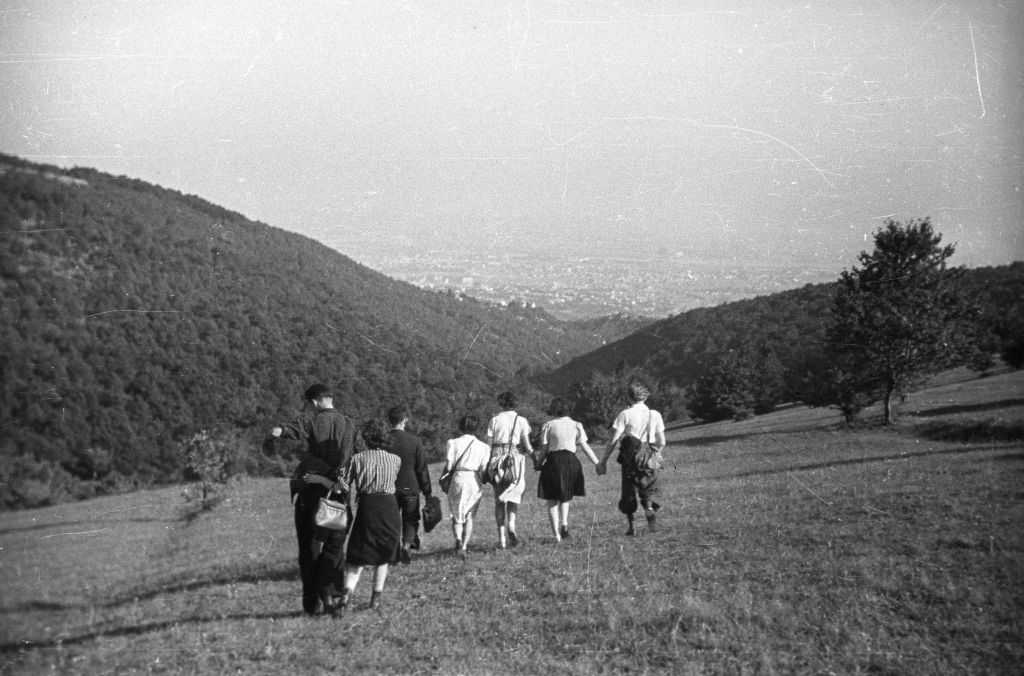
Csillebérc was a popular excursion destination. To the left is Széchenyi Hill, opposite the Farkas-völgy (Wolf Valley), to the right Ördög-orom (Devil's Ridge), the picture was taken in 1946 (Source: Fortepan / No.: 78985)
The area has been officially called Csilebérc since 1847; it appears with this spelling on maps published in the 1940s. During the Reform Period, Gábor Döbrentei changed the hills name from its previous name, Kukuberg Dreihotter, referring to the historical records of Count János Majláth. Likely, the name of the nearby Csiki Hills was misspelled in the cited document, from which the name Berg Csile (Csile Hill) was born, which Döbrentei renamed Csilebércz. The name Csillebérc is presumably a spelling mistake resulting from the pronunciation, which was eventually officially recorded.
Due to the wonderful panorama, it was a popular place for rest and excursions, and already in the 1910s, the creation of sports grounds, ball fields, children's playgrounds and large summer shelters in the most beautiful parts of the Buda hills, Farkasvölgy and Csillebérc, was recommended. The construction of the Széchenyi railway to support the area was also floated.
In the 1930s, Csillebérc became a meeting place for members of the illegal Communist Party. This probably also contributed to the fact that the construction of the pioneer camp started here in May 1948, although earlier the castle park of Gödöllő was also floated as a possible location. The other reason may have been that the scouts planned a scout park in Csillebérc, where a centenary memorial camp would have been held in 1948.
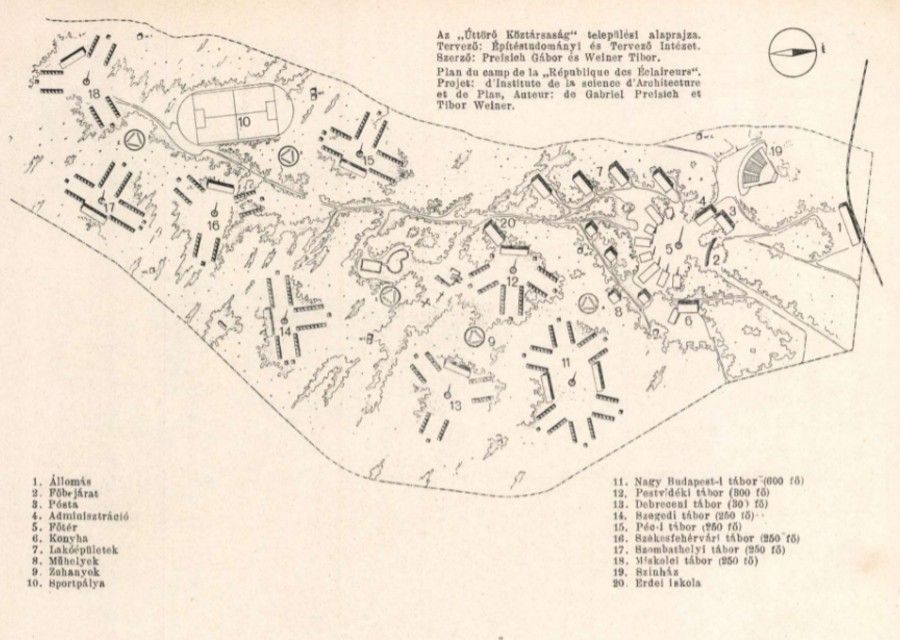
An original blueprint of the Pioneer Republic in which the sub-camps had names not connected to the communist movement. The sports field, workshops and residential buildings were not completed for the opening in 1948 (Source: Új Építészet, No. 7, 1948).
However, the Hungarian Scout Association was disbanded (in the same year), and the Association of Hungarian Pioneers adopted the idea of the park. The area to establish the Pioneer Republic was claimed from the capital on 15 March 1948. The date is not accidental; it expressed that the pioneers "continue the traditions” of the Youths of March from 1848.
Construction began in April, and plans were to open the new facility by the summer. Therefore, youths were recruited from the universities, who worked in the construction of the camp in a total of 22 brigades, and the work was directed from the hiker's refuge on Normafa.
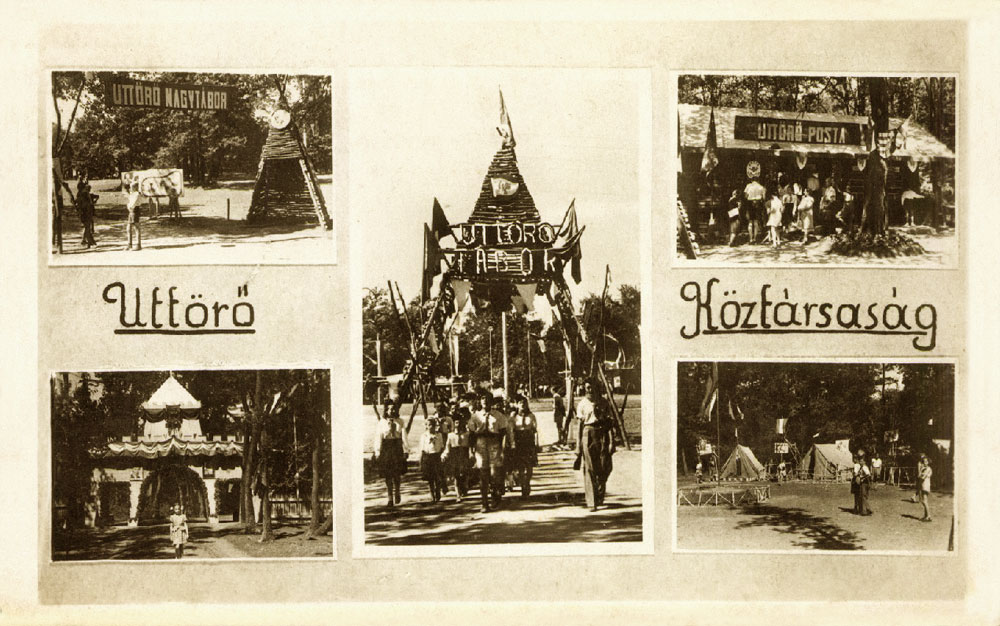
When the Csillebérc camp opened in 1948, only tents awaited the campers. Postcard from the 1950s
Simultaneously with the construction of the camp, the construction of the narrow-gauge railway began, and on 1 April 1948, the party ordered the construction from the Magyar Államvasutak (MÁV, Hungarian State Railways). The first section of the Children's Railway – from Széchenyi Hill to the Előre station – was completed for the opening of the camp. The entire line was only opened on 20 August 1950. MÁV was appointed as the operator, and children provided the service.
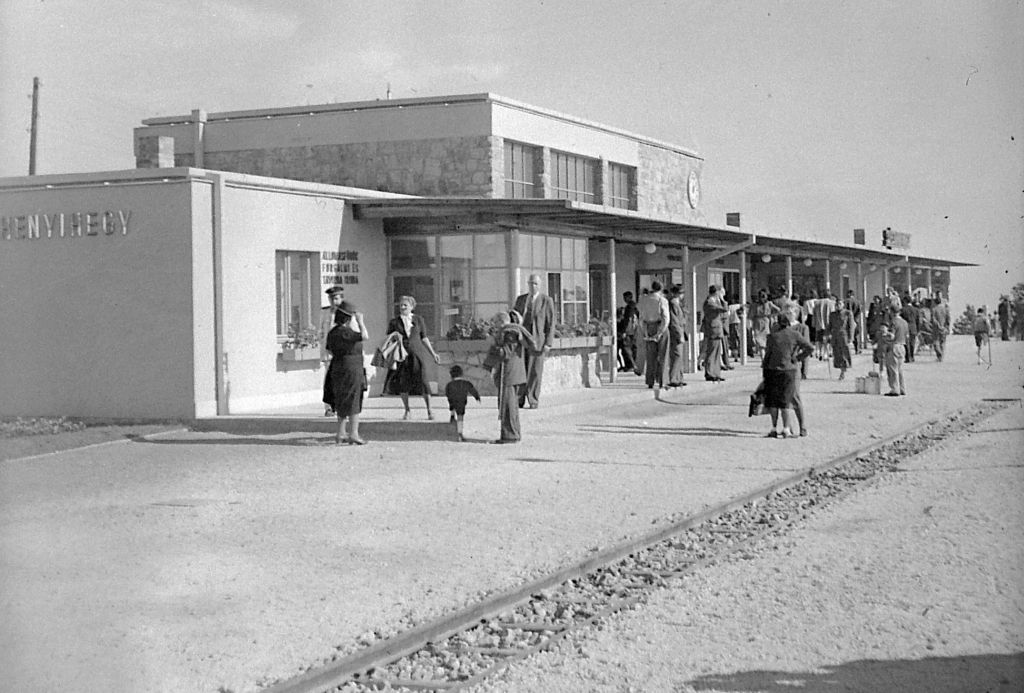
The terminus of the Children's Railway on Széchenyi Hill in 1948. At the time, the railway ran to the Előre (today: Virágvölgy) station, the entire line was completed in 1950, and pioneers worked on the trains and at stations (Source: Fortepan / No.: 1960)
Contemporary news referred to the inauguration of the most modern children's railway on 31 July 1948, as a “worthy celebration of the anniversary of the first Three-Year Plan” in Csillebérc. The first train left for the camp with three hundred invited guests, and the company led by party secretary Mátyás Rákosi walked on Rákosi Mátyás Road to the main square of the camp, where thousands of pioneers were waiting for them.
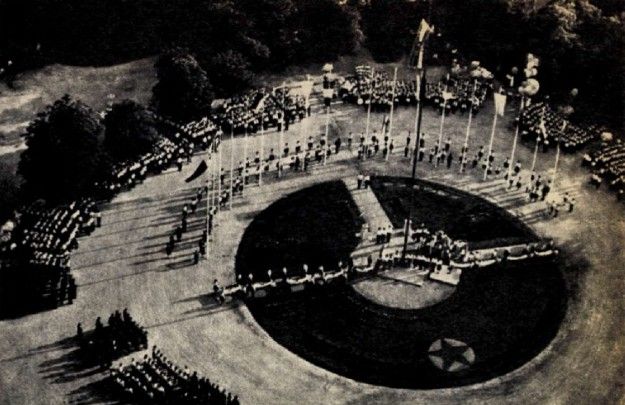
The raising of the flag was a traditional ceremony of camp life (Source: Ifjú Kommunista, No. 6, 1973)
The 4.6-hectare camp itself was divided into two parts by the said main road: on the right and left. There were 4-4 sub-camps, then known as provinces. The tents could accommodate 200 children each sub-camp, to whom a donkey carriage delivered the food. In the early years, the camp was not fenced, so the sub-camps were guarded by guards equipped with air rifles.
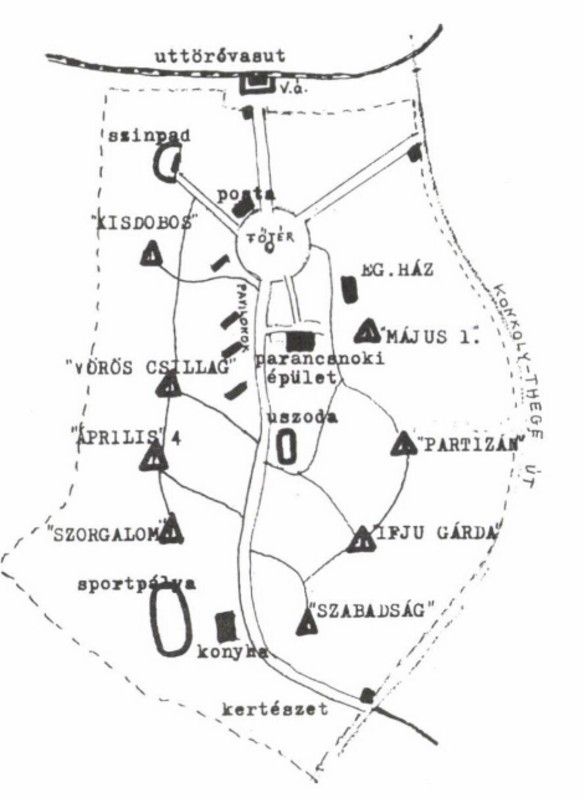
There were eight sub-camps within the large camp, each with a capacity of 200 children
An outdoor stage was built in the first year, but the sports fields, playgrounds, swimming pool, hot water sanitary facilities, command building, post office in the main square and radio station were not completed until the early 1950s.
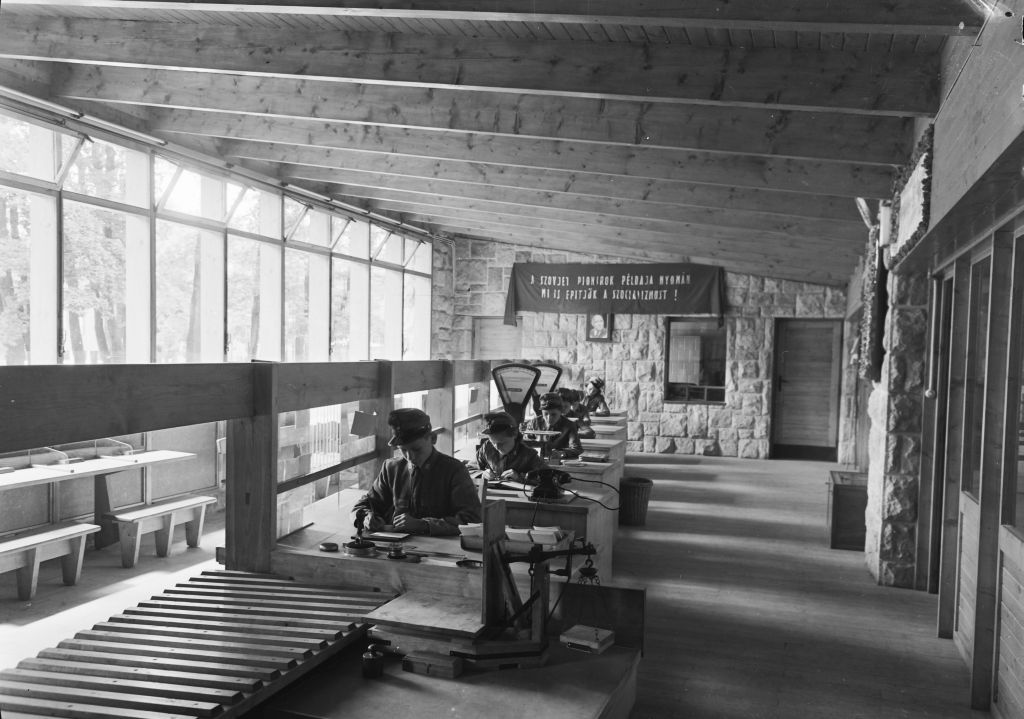
From the beginning of the 1950s, the camp also had a post office operated by pioneers (Source: Fortepan / No.: 9267)
The tents were replaced with panel cottages during a major renovation in the 1960s, a self-service dining room was built, and the command building was also expanded. There were also plans to expand the camp on the north and connected the two halves with an overpass. In the end, this did not happen, on the one hand, due to financial reasons, and on the other hand, the construction of the Zánka camp began.
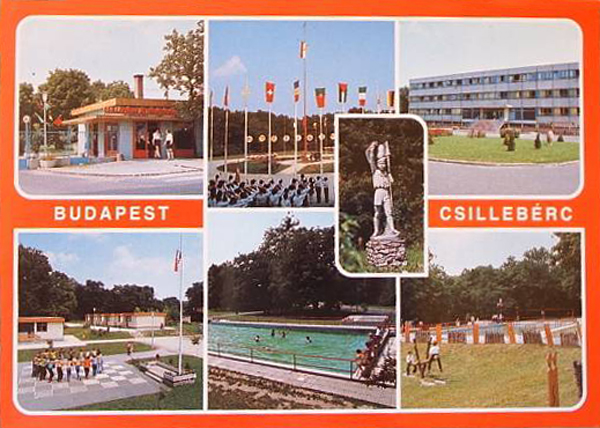
Csillebérc in the 1980s on a postcard, by then the campers vacationed in panel cottages, the small buildings can be seen in the left corner of the picture. The command building in the right corner of the picture was enlarged to three stories in the 1960s
After the change of regime, the income of the pioneer camp plummeted. The idea to transform the arose several times, there were plans to move the Pető András Institute for the treatment of children with disabilities to the site, and for some time, there was a school in the area. Eventually, it operated as the Csillebérc Youth and Leisure Center, any mainly hosted corporate events and conferences.
Certainly, many people have fond memories of the summer camps, but Csillebérc is also an example of the wealth transfer that happened after the fall of socialism. For a decade and a half, there was a lawsuit to settle the ownership of the camp. It is due to the results of this that Csillebérc will again house a children1s camp organized by the Erzsébet Foundation for Children in the Carpathian Basin.
Cover Photo: One of the buildings of the Csillebérc Pioneer Camp in 1950 (Source: FSZEK Budapest Collection)

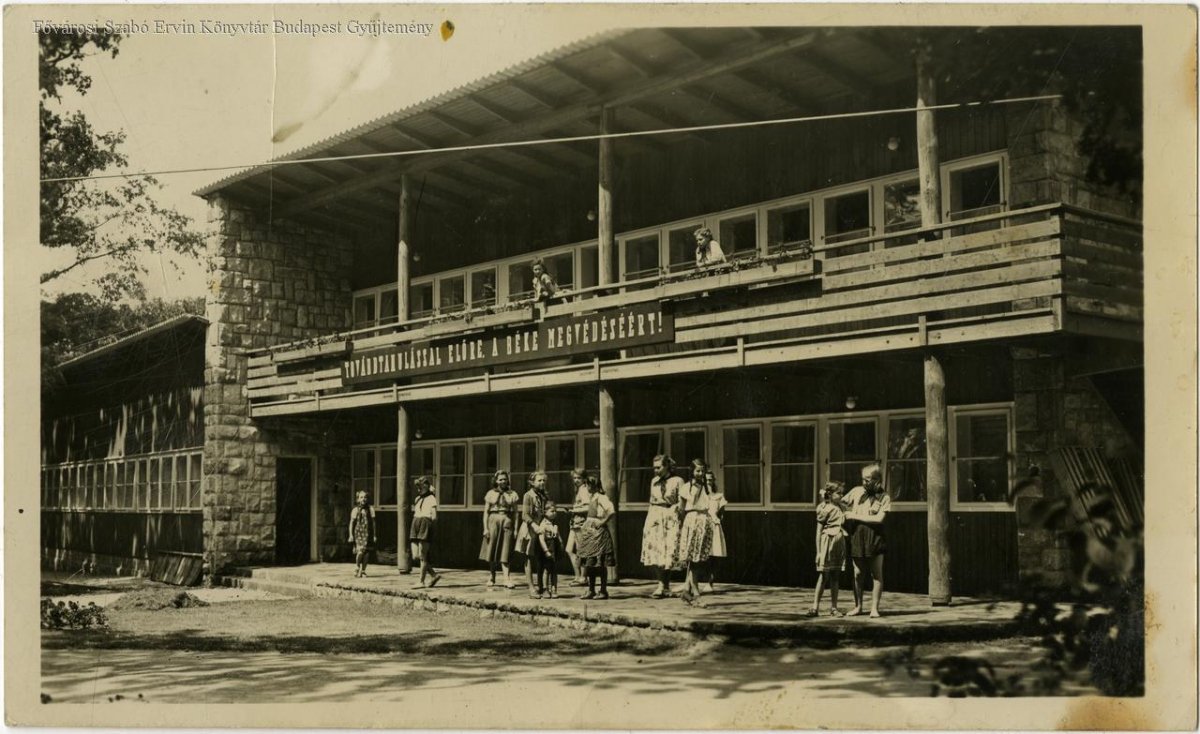



































Hozzászólások
Log in or register to comment!
Login Registration